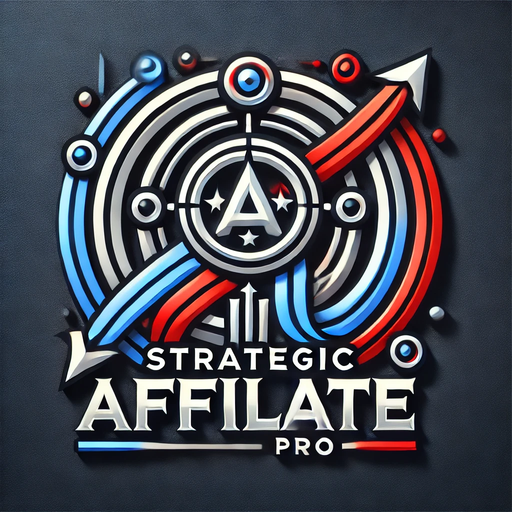The Affiliate Marketing Tools For Beginners are essential for anyone looking to dive into the world of online income generation. Starting with the right tools and strategies can mean the difference between a thriving affiliate marketing career and one that struggles to take off.
In this blog, we’ll explore everything you need to know about beginning your journey, including how to start affiliate marketing as a beginner, the best tools for the job, the feasibility of earning $100 a day, and the top affiliate programs for beginners.
How Can I Start Affiliate Marketing as a Beginner?
Affiliate marketing can seem overwhelming at first, but breaking it down into manageable steps makes it more accessible. Here’s a step-by-step guide to help beginners get started:
1. Understand Affiliate Marketing Basics
Affiliate marketing involves promoting products or services and earning a commission for each sale or action generated through your referral link. Familiarize yourself with key terms such as affiliate links, conversion rates, and commission structures.
2. Choose a Niche
Picking a niche is one of the most critical decisions. Focus on a topic you’re passionate about and one that has market demand. For example, niches like health and wellness, personal finance, or technology often perform well.
3. Find Affiliate Programs
Search for programs that align with your chosen niche. Popular affiliate networks like Amazon Associates, ClickBank, and ShareASale offer a wide range of options.
4. Set Up a Platform
You need a platform to promote affiliate products. Most beginners start with a blog, YouTube channel, or social media accounts. A website offers long-term benefits, allowing you to optimize for SEO and grow your audience.
5. Create Quality Content
Content is king in affiliate marketing. Write blogs, shoot videos, or create infographics that provide value to your audience. Reviews, how-to guides, and comparison posts are great formats.
6. Drive Traffic to Your Platform
Use organic and paid methods to attract visitors. SEO, social media marketing, and PPC advertising are common strategies.
7. Monitor and Optimize
Track your performance using analytics tools. Experiment with different approaches to find what works best for your audience.
8. Learn from Experts
Seek inspiration and guidance from experienced affiliate marketers. Online courses, forums, and mentorship programs can accelerate your learning curve.
9. Stay Consistent and Patient
Affiliate marketing success doesn’t happen overnight. Dedicate time each day to building your platform, testing strategies, and engaging with your audience.
10. Test Different Strategies
Experiment with various techniques, from social media campaigns to email marketing, to determine what resonates with your audience.
11. Leverage Analytics Tools
Use tools like Google Analytics and heatmaps to understand your audience’s behavior and improve your content strategy.
12. Focus on Building a Brand
Establishing a recognizable brand can help you stand out in a competitive niche. Consistent branding across all platforms increases trust and credibility.
13. Utilize Social Proof
Sharing customer reviews, testimonials, and user-generated content can build trust and encourage potential buyers to convert.
14. Engage with Your Audience
Respond to comments, participate in forums, and connect on social media. Engaging with your audience fosters a sense of community and builds loyalty.
15. Invest in Paid Traffic Strategies
Once your platform starts gaining traction, reinvest earnings into paid ads to scale your traffic and conversions.
Which Tool is Best for Affiliate Marketing?
The right tools can significantly enhance your productivity and profitability. Here’s a list of essential tools for beginners:
1. Website Builders and Hosting Platforms
- WordPress: A user-friendly platform for building your affiliate marketing website.
- Bluehost: A reliable hosting service ideal for beginners.
- Squarespace: Another alternative for creating professional-looking websites.
2. Keyword Research Tools
- SEMrush: Great for finding low-competition keywords.
- Ubersuggest: A budget-friendly option for keyword research.
- Ahrefs: Ideal for comprehensive SEO analysis.
3. Content Creation Tools
- Canva: Perfect for creating eye-catching graphics and social media posts.
- Grammarly: Ensures your content is free of grammatical errors.
- Jasper (formerly Jarvis): AI-powered tool for generating high-quality content.
4. Email Marketing Tools
- ConvertKit: Designed for affiliate marketers with automated workflows.
- Mailchimp: A beginner-friendly option with free plans available.
- AWeber: Great for building and managing email lists.
5. Analytics and Tracking Tools
- Google Analytics: Provides insights into your website traffic and user behavior.
- Voluum: Tracks affiliate campaign performance.
- Bitly: Shortens and tracks affiliate links.
6. Affiliate Link Management Tools
- ThirstyAffiliates: Helps cloak and manage affiliate links.
- Pretty Links: Simplifies link tracking and customization.
7. Social Media Tools
- Buffer: Schedules posts across multiple platforms.
- Hootsuite: Monitors and manages your social media presence.
- Tailwind: Specifically useful for Pinterest and Instagram marketing.
8. Graphic Design and Video Editing Tools
- Adobe Spark: Simplifies video and image creation.
- Filmora: Beginner-friendly video editing software.
- Lumen5: Converts text into engaging videos.
9. SEO Plugins
- Yoast SEO: A WordPress plugin to optimize content for search engines.
- Rank Math: Another great SEO tool for WordPress users.
10. Project Management Tools
- Trello: Organizes your tasks and campaigns.
- Asana: Helps manage multiple projects efficiently.
11. A/B Testing Tools
- Optimizely: A/B testing platform to improve conversion rates.
- Google Optimize: Free tool for split-testing and personalization.
12. Landing Page Builders
- ClickFunnels: For creating high-converting sales funnels.
- Leadpages: Easy-to-use landing page builder for beginners.
If you want to learn more go here.
Can You Make $100 a Day with Affiliate Marketing?
Yes, earning $100 a day with affiliate marketing is achievable, but it requires effort, strategy, and consistency. Here’s how you can work toward this goal:
1. Start with High-Converting Products
Focus on products that offer high commissions and have proven conversion rates. Digital products, for example, often provide better margins than physical ones.
2. Build an Email List
Email marketing remains one of the most effective ways to engage with your audience. By building a list, you can promote products directly to subscribers.
3. Leverage Multiple Traffic Sources
Relying on one traffic source can be risky. Use a combination of organic SEO, paid ads, and social media to diversify.
4. Optimize Your Funnel
Ensure your sales funnel is optimized to convert visitors into buyers. This includes compelling CTAs, landing pages, and follow-up emails.
5. Scale with Paid Advertising
Once you’ve identified a winning strategy, consider investing in PPC advertising to scale your efforts.
6. Focus on Recurring Revenue
Promote subscription-based products or services that offer recurring commissions. This creates a stable income stream.
7. Analyze and Adjust
Regularly review your campaign performance. Optimize underperforming areas and double down on successful strategies.
8. Create Value-Driven Content
Your content should always prioritize value. Answer questions, solve problems, and build trust with your audience. Trust translates to higher conversions.
9. Collaborate with Other Marketers
Partnering with other affiliates can help you reach new audiences and share successful strategies.
10. Set Realistic Goals
Break your $100-a-day goal into smaller milestones. Celebrate achievements to stay motivated.
11. Invest in Education
Take courses, attend webinars, and stay up to date with trends in affiliate marketing.
12. Capitalize on Trends
Monitor market trends and adapt your strategy to align with popular products or seasonal opportunities.
13. Repurpose Content
Turn a successful blog post into a YouTube video, infographic, or social media carousel. This expands your reach.
14. Optimize for Mobile Users
Ensure your website and campaigns are mobile-friendly, as many users browse and shop on their phones.

Which Affiliate Program is Best for Beginners?
Selecting the right affiliate program is crucial for beginners. Here are some of the best options:
1. Amazon Associates
- Pros: Huge product selection, trusted brand.
- Cons: Low commission rates (around 1-10%).
2. ClickBank
- Pros: High commissions on digital products.
- Cons: Some products may lack quality.
3. ShareASale
- Pros: Variety of merchants and niches.
- Cons: Requires some experience to navigate effectively.
4. CJ Affiliate
- Pros: Well-established network, top-tier brands.
- Cons: Approval process can be stringent.
5. Wealthy Affiliate
- Pros: Ideal for beginners with training and community support.
- Cons: Focused primarily on its own platform.
6. Rakuten Advertising
- Pros: Offers high-quality brands and products.
- Cons: Limited product categories.
7. Impact
- Pros: Modern interface, partnerships with big brands.
- Cons: Requires some experience to leverage fully.
8. Fiverr Affiliates
- Pros: Promotes freelance services with high demand.
- Cons: Commission payouts can be lower compared to other platforms.
9. eBay Partner Network
- Pros: Broad range of products, competitive commissions.
- Cons: Short cookie duration.
10. Shopify Affiliate Program
- Pros: High payouts for promoting an industry-leading platform.
- Cons: Targets a specific audience of entrepreneurs.
11. Awin
- Pros: Thousands of brands and products to promote.
- Cons: Registration requires a small fee.
12. HostGator Affiliate Program
- Pros: High payouts, trusted hosting provider.
- Cons: Niche-specific audience.
Conclusion
Affiliate marketing is an exciting opportunity for beginners looking to earn passive income. By starting with the right tools, focusing on high-quality content, and choosing the best affiliate programs, you can build a successful affiliate marketing business.
The journey requires patience and effort, but with consistency, earning $100 a day or more is entirely within reach. Use the strategies and tools outlined in this guide to kickstart your journey today!
Remember, the affiliate marketing landscape is ever-changing. Stay adaptable, keep learning, and don’t hesitate to invest in your skills and resources. As you grow your expertise, you’ll unlock new opportunities and revenue streams, making your efforts all the more rewarding.
Click Here to Start Your Journey
Enjoyed this article? Let’s continue the conversation on LinkedIn.


Hey, Herman,
This article starts off with a pain point in a question: can I start affiliate marketing as a beginner? Your 15 tips to answer this common question are so important as they laid the foundation for affiliate marketing. The tools listed for affiliate marketing are the best. You then went on to talk about daily income goals: can I earn $100/day?
I have learned a lot from these.
However, I have also felt overwhelmed by the lists and numbers under each main point/heading. While the lists make it simpler for someone to read the article and see the points laid out clearly, it’s also distracting to some of us because one doesn’t remember whether we are in heading one or five when all have their numbers/lists.
At the end, you asked the reading to read your review on Wealthy Affiliate. Why do you recommend this affiliate program when there are so many others in your lists?
John
Hi John,
Thank you so much for taking the time to share your feedback—I truly appreciate it!
I’m glad you found the tips helpful and the tools useful for starting affiliate marketing. It’s encouraging to know the article provided you with valuable insights, especially around daily income goals like earning $100/day.
I completely understand how the lists and numbers under each point can feel overwhelming. Balancing clarity and simplicity is always a challenge when trying to cover so much ground. Your feedback has highlighted an opportunity for me to refine how I present information. Perhaps breaking the article into smaller sections or using visual elements like subheadings or call-out boxes could make it less overwhelming. I’ll definitely keep this in mind for future posts.
As for recommending Wealthy Affiliate, that’s a great question. I personally recommend it because it’s beginner-friendly, offers a solid community of support, and provides the tools and training needed to build a successful affiliate business. That said, it’s one of many great programs out there, and I always encourage readers to explore options that align with their specific goals and niches.
Thanks again for sharing your thoughts! Feedback like yours helps me improve and create content that’s more engaging and helpful. Let me know if there are other topics you’d like me to cover in the future!
Best regards,
Herman